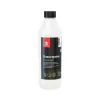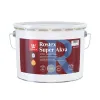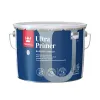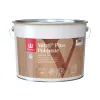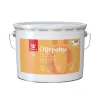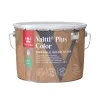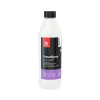How to paint wooden façades and fences
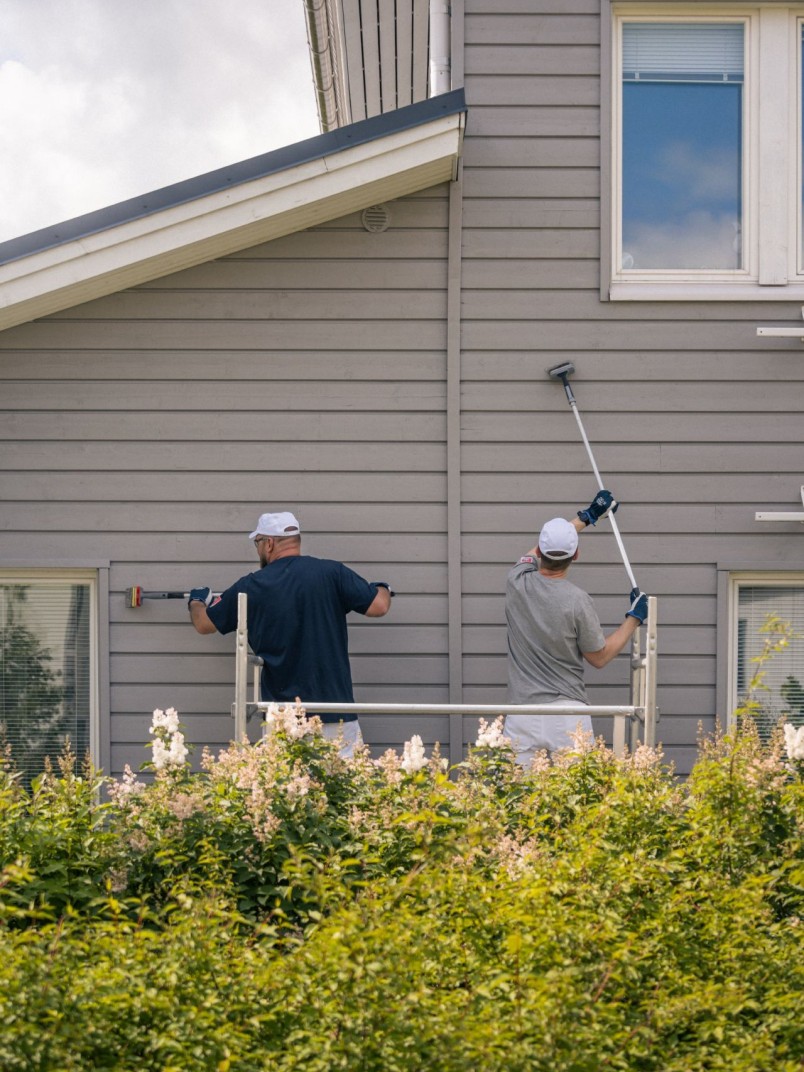
The perfect weather for painting is cloudy and dry with temperatures between 15 and 20°C. The relative humidity should be less than 80% and you should make sure the surface you’re going to be painting is completely dry. The lower the water content of the wood, the better finish you’ll get – and the longer the protection will last. Don’t paint if the surface or the air temperature is below 5°C or above 30°C – both will reduce the performance of the paint.
Watch our video on how to paint wooden façades, with step-by-step guidance on how to achieve a professional finish

1. Prepare for painting
First prepare your area by protecting any surfaces you don’t want to get paint splatters on. If you’re painting a new surface, remove any dirt and make sure it is clean. If you’re repainting a previously painted surface, remove dust and dirt and use a scraper to take off the old coating. Clean with Tikkurila Homeenpoisto mould removal solution according to the instructions, rinse with water and allow to dry.
PRODUCT YOU MIGHT NEED
2. Prime the surface
For a new, unpainted surface, prime with a single coat of Ultra Primer or Valtti Plus Pohjuste. Protect any metal that might be prone to rust, such as nail heads, with Rostex Super Akva metal primer. Remove loose resin from knots.
If the surface has previously been painted and you haven’t sanded back to the wood, you can skip this step and go straight to step 3: treating the surface with paint or wood stain. If the old coating has worn away, surfaces previously painted with oil paint should be primed with Öljypohja oil primer, and those previously painted with acrylic paint with Ultra Primer.
PRODUCTS YOU MIGHT NEED
3. Paint using opaque paint or wood stain
Choose from Ultra Classic paint or Valtti Plus Color wood stain and mix well before use. If you’ve chosen paint you can apply it with a brush or high-pressure sprayer, whereas stain after spraying should be brushed up with a brush. Start by painting the sidings, then continue into the middle of the surface area, working from top to bottom. Make sure you are careful to fully cover the edges and ends of objects and use a brush with an extension pole to reach up high. Follow the sun and avoid painting walls that are exposed to direct sunlight.
New surfaces usually need two coats, while previously painted surfaces need one or two coats depending on condition and the difference in colour.
PRODUCTS YOU MIGHT NEED
4. Tidy up
Clean your brushes and painting equipment with water. Pensselipesu tool cleaner is recommended to remove any slightly hardened paint. Remember to seal your cans well to ensure the paint or stain stays in the best possible condition.
